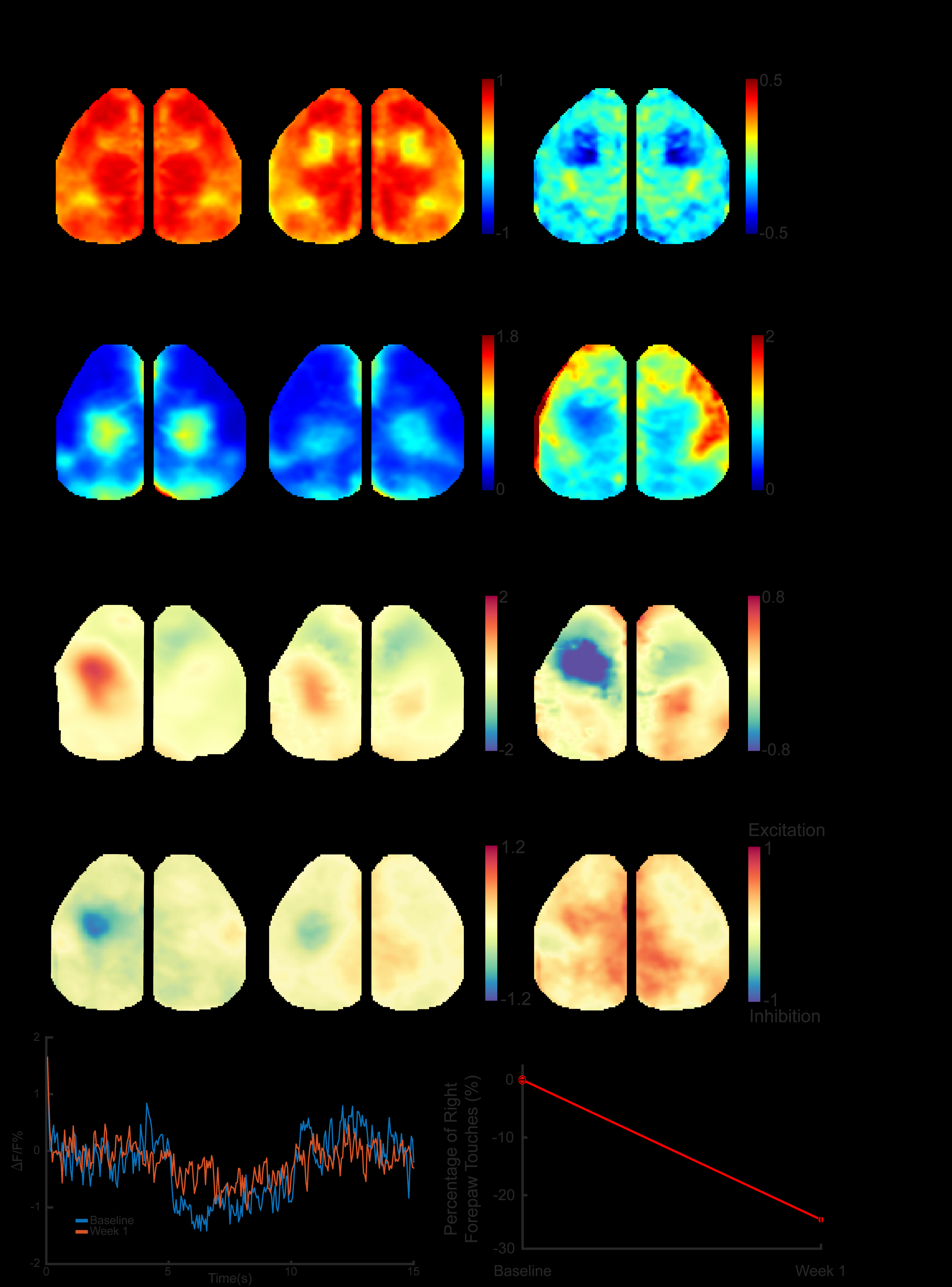Final ID: TP36
Parvalbumin Inhibitory Interneurons in Post-Stroke Recovery: Insights from Imaging and Optogenetics
Here we use 5 aged mice expressing Channelrhodopsin (ChR2) in PV-INs and the red-shifted genetically encoded calcium indicator, jRGECO1a, driven by the Thy1 promoter to allow for simultaneous optogenetic targeting of PV-INs and mesoscopic imaging of excitatory activity. Photothrombosis was induced in the left primary somatosensory forepaw cortex and subsequent optogenetic photostimulation of PV-INs, calcium, and hemodynamic imaging was conducted pre- and post-stroke to map PV-IN circuitry and assess changes in cortical activity.
Preliminary results revealed significant disruptions in homotopic resting-state functional connectivity and cortical activity one-week post-stroke. Power maps indicated reduced activity in the somatosensory, hindpaw, and parietal cortices, with electrical forepaw stimulation showing decreased activity in both left and right primary somatosensory forepaw regions. Contralesional excitation increased in the retrosplenial and parietal cortices during forepaw stimulation. Further, optogenetic stimulation of PV-INs pre-stroke showed increased inhibition, while post-stroke stimulation resulted in less ipsilesional inhibition and more global excitation. Behavioral assessments using the cylinder rearing test indicated a 26% decrease in right forepaw use post-stroke, aligning with imaging findings.
Ongoing studies aim to extend these observations by including a larger cohort of aged mice and a cohort of young mice at 1-, 4-, and 8- weeks post-stroke to examine age-related differences in PV-IN-mediated plasticity during stroke recovery. These studies will elucidate the critical contributions of PV-INs to post-stroke plasticity and recovery, potentially guiding new therapeutic approaches for stroke rehabilitation.
More abstracts on this topic:
Saver Jeffrey, Duncan Pam, Stein Joel, Cramer Steven, Bornstein Natan
Estimated Electrical Field With Transcranial Direct Current Stimulation (tDCS) and Response to Gait Therapy Combined With tDCS in Chronic Stroke PatientsYaghmoor Bassam, Hardin Elizabeth, Zink Elizabeth, Pundik Svetlana, Skelly Margaret, Mccabe Jessica, Salameh Ahlam, Bikson Marom, Duncan Kelsey, Mosca Luke, Leonhardt Lisa, Hisel Terri
Readers' Comments
We encourage you to enter the discussion by posting your comments and questions below.
Presenters will be notified of your post so that they can respond as appropriate.
This discussion platform is provided to foster engagement, and simulate conversation and knowledge sharing.
You have to be authorized to post a comment. Please, Login or Signup.


